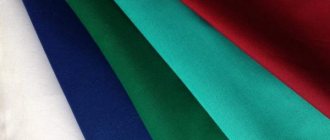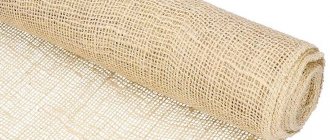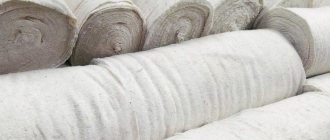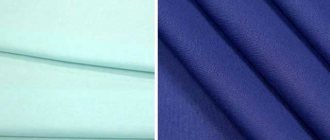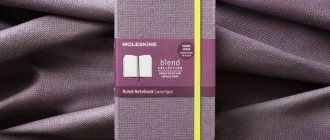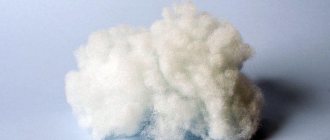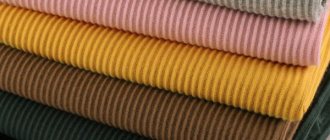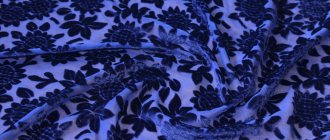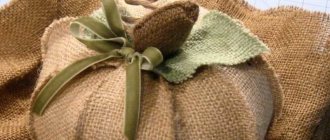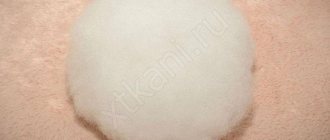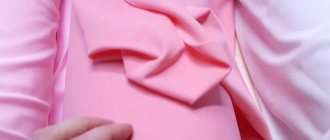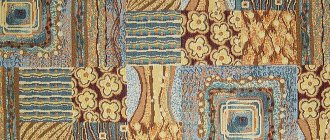For most people, the phrase “synthetic fabric” evokes a strong association with something inexpensive and not very comfortable. However, modern high-tech materials have unique properties, including the ability to self-regulate. Such “smart” materials include aloe fabric with a membrane coating.
Its outer side protects from cold, wind, rain, and the inner side regulates the removal of heat and fumes from human skin . This allows you to create a suit that, on the one hand, will reliably protect you from bad weather, and on the other hand, will allow you to always feel comfortable - without overheating or overcooling.
What is membrane tissue
Among innovative synthetic materials with enhanced protective properties, membrane fabric occupies the first position. It allows excess moisture to be removed outside without letting drops of water inside.
The first samples appeared and were patented back in 1969. And later many analogues were developed. One of them is the material alova.
Membrane fabric is a high-tech invention. It is intended for people working in extreme conditions or for outdoor enthusiasts and performs important functions:
- provides reliable protection from adverse weather conditions (snow, rain, strong wind and frost);
- creates a comfortable microclimate near the surface of the skin, removes excess heat and fumes to the outside, preventing overheating or hypothermia of the body.
The membrane can be of two types:
- With an open porous structure. The diameter of each pore is smaller than a drop of water, but larger than the size of a water molecule;
- Hydrophilic (non-porous). This type attracts moisture, binds and transports liquid molecules through diffusion from the inner layer of the fabric to the outer layer.
Reference! There is also another type of expensive combined membranes. They are made on a hydrophobic basis with a thin layer of polyurethane applied on top.
Properties of alova
This remarkable membrane fabric is manufactured to strict technical standards and must provide:
- waterproof with a water column of 8,000 mm, that is, it will not get wet in very heavy rain;
- internal air permeability of one and a half liters per second per square meter of fabric, which ensures full skin breathing with complete protection from external wind;
- vapor permeability in a volume of one liter per day per square meter;
- reliable thermal insulation (depending on the material of the outer layer);
- protection from contamination - the outer layer must have dirt-repellent properties;
- hypoallergenic and resistant to microorganisms, dust mites and other insects;
- frost resistance;
- ease of maintenance and durability.
Alova production process
Alova fabric - what is it and what raw materials are used to make it? The material is made from synthetic fibers using a special technology.
Helpful information:
Footer with lycra what kind of fabric
What kind of fabric is poplin?
Its main feature is the presence of several layers:
- The front side is made of polyester. Most often it is made by knitting, but can also be made from plain, umbrella or raincoat polyester fabric. The purpose of the outer layer is to ensure sufficient density and strength.
- On the inside there is a waterproof and steam-removing membrane film. It consists of synthetic polymers and is designed to stabilize heat and air flows.
Reference! In some samples, the third layer intended for insulation is a synthetic knitted fabric - fleece.
The essence of the production process is to heat the membrane film to a certain temperature and then adhere it under high pressure to the fabric base. This technology ensures strong, but at the same time flexible adhesion of all components, preventing their further delamination.
Rules of care
Alova is easy to use and does not get dirty easily, but to maintain its functional qualities and attractive appearance it needs regular washing. To prevent the membrane fabric from deforming and losing its properties when washing, you need to follow a few simple rules:
- first of all, study the description of the fabric and recommended methods of care;
- any membrane fabric can be washed in warm water (manual or machine), but pre-soaking the suit is not recommended;
- you should use special washing liquids for alovaya or regular liquid soap (shampoo);
- After washing, air dry;
- The iron should be ironed as rarely as possible and only from the outside; the surface of the iron should not be hotter than 110°.
To prevent the membrane from losing its wonderful properties, when washing it is strictly prohibited:
- use bleaches and components containing chlorine;
- use pore-clogging washing powder;
- dry the fabric near heat sources.
For cleaning, you can use white spirit, tetrachlorethylene and monofluorotrichloroethane.
Characteristics and properties
When describing alova fabric, mention should be made of its main characteristics:
- soft to the touch with a velvety texture;
- light;
- comfortable;
- hypoallergenic;
- breathable;
- durable and strong;
- wear-resistant;
- resistant to low temperatures and pathogenic microflora;
- does not get wet;
- does not hinder movements;
- does not rustle;
- not electrified.
This fabric protects not only from bad weather conditions, but also from insect bites. It has an attractive appearance, because its upper knitted layer is decorated with a print of natural brown, beige and greenish shades, which is a good camouflage.
The material also has many unique properties:
- Waterproof . This figure reaches 8 thousand mm of water column, the suit will not get wet even in heavy rain.
- Air permeability (breathability) . Equals 1.5 dm³/m² sec. The material protects well from gusts of wind, but at the same time allows the skin to breathe.
- Thermal insulation . The fabric reliably protects from the cold and at the same time retains heat inside the suit, preventing the body from overheating.
- Dirt resistance . The top layer is coated with a special dirt-repellent impregnation, which allows clothes to stay clean longer.
Another important property of the material is vapor permeability . And this feature is explained by the exceptional structure of the alova tissue, the membrane of which ensures the removal of vapors emitted by the body to the outside and at the same time does not allow moisture from the external environment to pass inside.
The fact is that simple water molecules tend to combine into more complex associates. Therefore, the pores of the membrane do not allow large formations to pass inside. And the sweat secreted by the human body, evaporating, contains only single molecules that easily pass through the membrane layer.
Reference! The vapor permeability value is 1000 g/m²/24 hours. Therefore, manufacturers warn that the feeling of comfort will remain only with moderate physical activity. You should not engage in active sports wearing suits made of scarlet fabric.
Fabric characteristics
The material is a knitted fabric made of polyester threads with a membrane layer tightly fixed on the reverse side. Consumers tend to distrust synthetic fabrics, from which everyone has not the most pleasant memories. New generation polyester materials have completely different qualities, different from products of the Soviet and perestroika times. The properties of alova are proof of this.
Clothes made from aloe are suitable for fishing, hunting, sports
Thanks to the unusual structure of the fabric, clothes made from it are practical and comfortable to wear. Its advantages are as follows:
- reliability of wind protection;
- resistance to negative temperatures;
- well-defined ability of the outer layer to repel water;
- pleasant tactile sensations upon contact with the body;
- high wear resistance;
- soft surface that does not rustle or rustle when moving.
Innovative initiatives of manufacturers are constantly being implemented. As a result, varieties of alova with a surface made of woven materials appear on the market. New modifications have the same qualities as the base material.
The fabric is dyed with a print that imitates natural shades. Coloring in brown, green, beige tones allows you to go unnoticed in a forest or clearing. Alova:
- does not cause allergic reactions;
- prevents the appearance of pathogenic microflora under the surface;
- retains heat well;
- protects against insects.
Care instructions
The material is resistant to stains, but its area of application requires frequent washing. Therefore, it is important to follow a number of recommendations that will allow you to keep your clothes in their original form for a long time and extend their service life:
- the material tolerates both machine and hand washing, but the water temperature should not exceed 30°;
- it is necessary to use special detergents that will not damage the membrane; in extreme cases, you can use liquid soap or regular shampoo;
- even in case of severe contamination, clothes made of aloe fabric should not be soaked;
- drying must be done exclusively in a natural way;
- The product can only be ironed on one side - the front side, and the temperature should be at a maximum of 110°.
If not properly cared for, the material may lose its unique properties, and the membrane will undergo deformation and no longer provide good protection.
It is strictly forbidden to:
- wash products using chlorine-containing, bleaching, powder products (powder granules can penetrate the pores of the membrane);
- dry things using heating devices or near heat sources.
What is alova used for?
Since membrane fabric was developed as a targeted material for special-purpose clothing, a suit made from it is intended primarily for difficult weather conditions. The thermal insulation properties of alova allow us to minimize the energy consumption of the human body under the most unfavorable external conditions, and also reliably protect against frost.
This material is used to equip extreme entertainment enthusiasts, hunters, fishermen and just tourists . In accordance with this, there is a large selection of camouflage membrane fabric of various colors on sale.
The remarkable properties of alova did not go unnoticed by manufacturers of ordinary clothing. Such a jacket or peacoat will not be out of place even in the city. A winter suit or overalls made of alder will reliably protect a child from hypothermia and allow him to actively spend time outdoors even in the cold season, which is confirmed by numerous reviews from parents.
Camouflage colors are well suited for the current military style, and fans of more discreet trends can choose plain scarlet, the range of which is quite wide.
In addition, membrane fabric has become widespread for sewing protective covers and even as upholstery material for furniture.
Properties
What made alova popular were its unique properties, which were confirmed not only by laboratory research, but also by practice. The main ones include:
- Frost resistance. Thin fabric will reliably protect at sub-zero temperatures. You can wear these clothes outside for a long time, despite the cold, wind or precipitation. There are suits that can withstand temperatures down to -40 degrees.
- High thermal insulation. The ability to retain heat not only provides comfort, it also reduces the body's energy costs even in the most unfavorable conditions.
- Hypoallergenic. Allergy is the main quality that causes dissatisfaction among opponents of synthetics. But this material is absolutely safe for the skin. In addition, it protects against dust, insects, and prevents the development of pathogenic microflora. All these factors often provoke the occurrence of allergic reactions. But when using products made from alova, they are completely excluded.
Sometimes the top of the fabric is coated with special impregnations. Thanks to them, it receives dirt-repellent properties, which ensures ease of maintenance and wear resistance.
Appearance on the market
In Western countries, products made from membrane fabrics have been produced for decades. The first Gore-Tex material, from which waterproof shoes and clothing began to be made, appeared thanks to the work of engineer Bob Gore on stretching Teflon. In 1976, an American company brought to the market anorak and parkas that resemble raincoats, but do not accumulate moisture inside. Gore-Tex fabric bonds the membrane to dense face layers and a durable lining. Clothing made from waterproof material produced by a manufacturer in the USA is expensive.
Alova, which first appeared in 2000, protects against moisture and cold no worse than Gore-tex, but the price of the fabric is 2.5 times lower. At first, equipment for the military was made from Chinese material; today, alova is supplied to numerous enterprises in the country, where they produce clothing for athletes and travelers.
Let's say a word about the shortcomings
The fabric has no obvious flaws. But sometimes avid hunters are dissatisfied with the vapor permeability indicators. They complain that after long walks in the forest, moisture accumulates under the membrane. Manufacturers of fashionable synthetics themselves warn: comfortable wearing is possible only with moderate loads. Alova is not suitable for driven hunting or intense sports. This problem is being solved, but all attempts to improve vapor permeability lead to higher prices for the final product.
Please note: Products with a membrane layer work most effectively only in combination, that is, with thermal underwear and fleece clothing (sweater, jumper). It is this multi-layer sandwich structure that can provide excellent moisture removal to the outside.
Manufacturing, composition and structure of the material
Fabric production includes 3 stages, at the first the base is made from raincoat fabric or from synthetic plain weave knitwear. Melted polymers are applied to the fabric, which spread throughout the material and fill the fibers. At stage 3, the alova is painted in different colors.
The top velvety layer of material prevents moisture from penetrating inside and protects from wind and dampness.
To create a membrane that retains heat, 3 methods are used:
- Polymers are melted by heating to high temperatures.
- Fibers, powders, dispersions are sintered.
- Stretch the monolithic film.
The material does not delaminate, since the layers are firmly bonded to each other. Adhesion is ensured by exposure to significant pressure and high temperature.
During the production process, a fabric is obtained that has specific properties:
| Specifications | Meaning |
| Density | From 180 to 250 g/sq.m. m |
| Hydrophobicity | 8 thousand mm |
| Breathability | 1.5 sq. dm |
Fleece, consisting of a large number of breathable pores, is added to the alova material from which winter clothes are sewn. Things made of fabric are warm, but light and thin, and retain their shape. By regulating the flow of heat and air, the membrane layer removes evaporation from the surface of the body to the outside.
Chinese companies produce alova dyed in black, dark gray, khaki, green and other solid colors, as well as with floral prints and camouflage patterns.
A few words about history
Alova is a membrane fabric that can protect from rain and wind better than a thick wool suit. This is a relatively new development in the textile industry. Although the first membranes appeared back in the 60s of the last century. The credit for their development goes to Wilbert Gore. The new product was named after him - Gortex. Later it had many analogues - Windtex, Laytec, Sympatex. The new artificial fiber is an improved option. During its development, all the shortcomings of previous years were taken into account. That is why alumina is in demand in the specialized market. And the price is more than affordable.
For reference: Alova is 3 times cheaper than a similar softshell. The price for the latter can reach 1000 rubles.
Advantages of innovative material
When developing a new product, specialists thought through every detail. Therefore, such synthetics have many advantages:
- Aesthetic appearance. Jackets made from this fabric can be worn in inclement weather and in the city. They look stylish thanks to high-quality prints.
- Unusual texture. The material is soft to the touch and causes a pleasant tactile sensation. This distinguishes it favorably from oilcloth and tarpaulin analogues.
- Silence. Alova does not rustle, rustle, or make any specific sounds when rubbing.
- Ease. During operation, nothing puts pressure on the shoulders, does not hinder movement, providing freedom of action.
- Reliability. It is difficult to damage such a product. It is resistant to cold air, so it does not crack in the cold.
- Easy to care for. After washing, the fabric perfectly retains its original shape, does not shrink, and the applied patterns remain just as bright and rich.
Note: Workers in the clothing industry are delighted with alova. She is extremely easy to work with. There are no difficulties with cutting and sewing.
Description
“Alova” fabric belongs to the group of artificial fabrics; it is presented in the form of 100% polyester knitwear on the front side, and has a membrane coating on the back side. It is this fabric that protects and prevents moisture and wind from penetrating from the outside, but can allow body and air vapor to pass through from the inside.
The layers of this fabric are tightly adhered to each other. Because of this structure of the material, it is considered breathable, and the outer surface of the knitwear is quite resistant to natural phenomena, as well as wear.
What is it used for?
This membrane material is designed specifically to make clothing for special purposes, so products made from it are intended for those who live in difficult climatic conditions.
The fabric is used to make peacoats, jackets, windbreakers, overalls, and trousers. “Alova” is used to obtain various items of equipment: tents, awnings, backpacks, bags. The material is often used to create clothing for fishermen, hunters, and tourists. Fans of military style will also find wonderful sets for themselves.
Thus, a suit made from Alova fabric will reliably protect against frost and, thanks to its thermal insulation properties, will retain heat. The product, made of membrane fabric, will create maximum comfort for its owner, it does not electrify, and with good proper care it can last a long time.
Features of the color scheme
Initially, alova was developed for extreme conditions, which determined its target audience: fishermen, hunters, hikers, and athletes. Therefore, you can most often find camouflage colors. This is especially true for hunting, when you need to blend in with your surroundings while waiting for prey.
However, the color range is not limited to this. Animal and floral prints and abstract patterns can be applied to the material. Basically, natural shades predominate: brown, orange, green. But there are also neutral (black, gray), pastel (coffee, blue, steel). Pastels are often used in the production of children's costumes. Plain scarlet is also available for sale.
Advantages of fabric
It should be noted that the velvety-looking Alova fabric does not rustle; it was specially developed for the manufacture of outerwear for special occasions when it is important to move silently. It can be intended for lovers of hiking, skiing, as well as for athletes who engage in sports such as mountaineering, mountaineering and for people who are interested in fishing and hunting.
